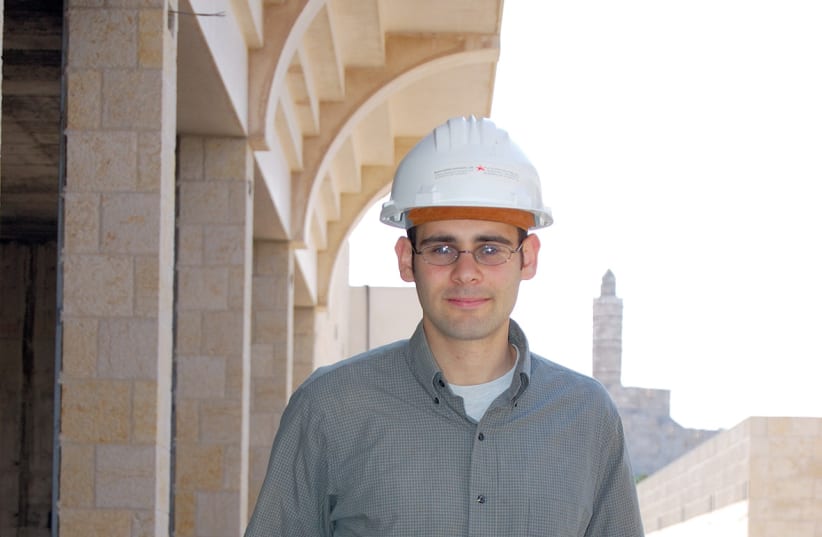When one thinks of the Bible and architecture, perhaps Noah’s Ark, the Tower of Babel, or the Mishkan comes to mind.
However, architect Joshua Skarf has filled the hardcover volume ArchitecTorah: Architectural Ideas in Judaism and the Weekly Torah Portion with almost 600 pages that contain essays and 115 black-and-white images – the result of extensive research on architecture and Torah.
Each essay briefly introduces a piece of architectural theory, a building, or a section of building code, and then reexamines a well-known topic in the Torah to bring new and insightful interpretations for the reader.
What is in the book?
This is not a book to sit and binge-read. The author has provided 178 short pieces for the 54 weekly Torah portions. For some weeks there are only two essays; however, for Beresheet, the first portion in Genesis, there are eight original short pieces. Each piece begins with one Hebrew quote, followed by an English translation. The introduction ends with chapter and verse numbers to enable one to easily locate the original source in the Bible.
With footnotes on every page, there is a wealth of information gleaned from Jewish and multiple other sources, including Greek and Roman, besides architectural experts from all ages. Vitruvius, the first-century CE Roman architect and engineer, and his Ten Books on Architecture served as the author’s guide in determining which subjects can be called “architecture.”
The extensive (over 10-page) bibliography begins with Aly Abdalla and ends with Paul Zucker, to give you an idea of the breadth of sources cited.
Concerning the well-known story of Moses and the burning bush, Skarf has a piece titled “Fire Rating.” The years spent by the Israelites in Egypt also provide ample material. The plagues get a fresh look from the familair stories. “Wind Patterns” on the well-known arrival and departure of locusts from Egypt, as well as the parting of the Red Sea titled “Passage Through Walls of Water” are some of the pithy titles.
“Vomitorea: Theater Architecture and Egress” was an interesting title. In this essay, we learn that the design of vomitorea is meant to convey order and planning – a positive, not negative term.
The author collected material for over 18 years and has presented it in a sharply detailed manner with an eye on the design and efficiency of an architect. He has degrees in architecture from the University of Michigan and Bezalel Academy. However, his years of study at Yeshiva Har Etzion and his lifelong study of Jewish texts add serious depth to his essays.
We all know of the Written and Oral Torahs, but Skarf also writes of “The Visual Torah” given at Sinai. “Once an object disappears and is lost from living memory, its design cannot be recreated with any confidence.”
We can only do our best to understand what the menorah looked like, he postulates. The inclusion of designs and drawings helps the reader understand various building and construction ideas presented.
The Table of Contents is clearly formatted to make it easy to find the weekly reading. A page of important abbreviations for the tractates of Talmud and other Jewish sources precedes the introduction of ArchitecTorah. The glossary, bibliography, and indexes at the end of the book are essential guides for any interested reader. It is not necessary to be an architect, or even Jewish, to appreciate the amount of work and thought that went into this volume and to learn from it.
Joshua Skarf is a licensed architect living and working in Jerusalem since 2004. His range of architectural work includes the design of hospitals, train stations, Israeli consulates, army installations, elementary schools, museums, research facilities, and includes the Mamilla Mall in Jerusalem, which he worked on as a staff member at Moshe Safdie and Associates.
ArchitecTorah is available at bookstores in Israel. It is to be available online at Amazon and Barnes and Noble. ■
ArchitecTorah: Architectural Ideas in Judaism and the Weekly Torah PortionJoshua SkarfUrim Publications, 2023598 pages, $39.95

